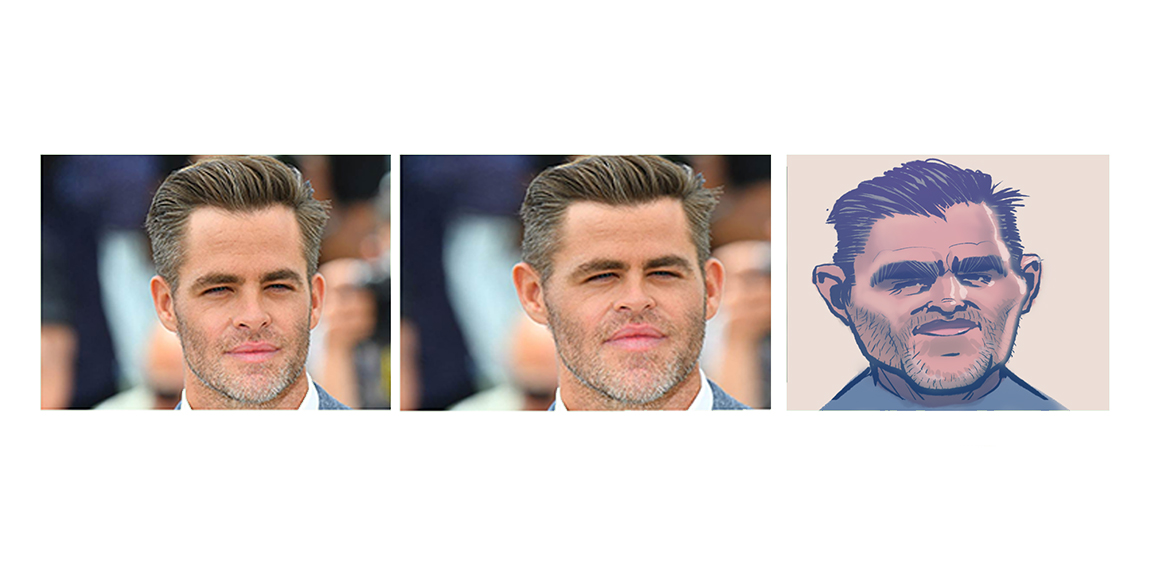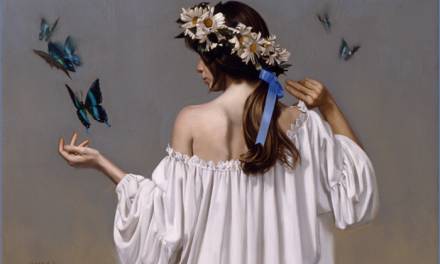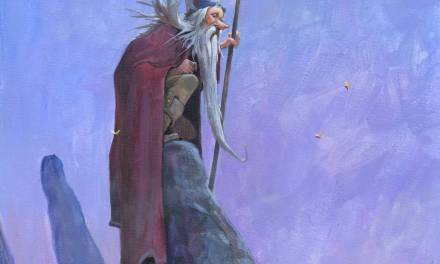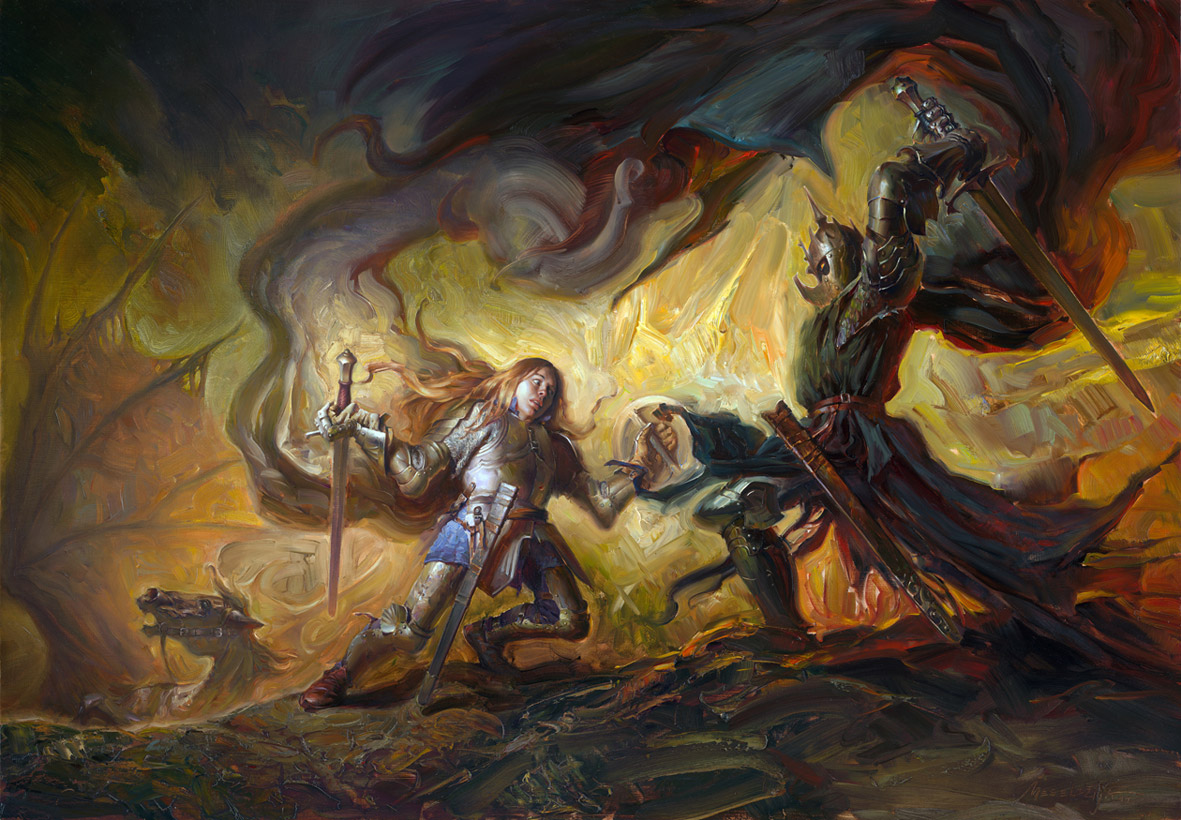This is for the artist who has a difficult time drawing caricatures, or altering faces in the way we need them for our work, or cannot find ideal enough reference to accomplish what is needed in their art.
First of all, unless your models can act, you will have a portrait of someone posing, lacking the essentials of what would be ideally useful for most illustrative situations. Secondly, there is no “ideal” reference waiting for us. We have to push all our reference to get it to feel valid for the moment we are depicting in our work.
So why not push the reference towards a closer “truth” of what is needed?
If you need a specific type of character, you have a face that is close, but a little less emotive, the wrong emotion you need, or no emotion, you can use most anyone, or use any face for your illustrative needs using the Liquify filter in Photoshop to “push” the reference into shape.
If you haven’t used it before, the filter takes any photo an allows you to push the pixels around without their edges to blur out the way the nudge tool does when trying to do the same thing with it. The shapes hold their edges well enough, and we can really exaggerate the forms as a result. One face can become 100, and one expression can become dozens. The below image shows the menu layout and tool bar. It is very simple to work with. I recommend that you allow the original image to show through (circled in red below) so you can judge how much you have altered the shapes from the original while working on it rather than having to hit okay and wait for results, only to have to undo and start again if you don’t like the results.
These have all been “Liquified” in Photoshop. The hardest part about this approach is knowing when you have what you need since the face can be pushed, pulled, smooshed, pinched, recalibrated into any design shape, caricature, or many expressions just from one image. I find that the caricature that has been designed is so much easier to copy than the originals because the shapes are easier to find and to draw when they are more exaggerated. Any face can be made into any expression, and any face can be shape changed in any way you want. The design is really up to how imaginative you feel that day.
It can help to have some working knowledge of the anatomy you are pushing and pulling on so that you can tweak it with the forms and the structures, but, do not let the lack of that knowledge stop you from playing and trying to find something interesting in your search. My examples are all portrait related, but you can do this with any subject.
The sketching process is not about deliberate copying, it is about finding inspiration and working loosely from the reference so as not to lock up and stiffen up the drawings. Having a solid reference that can be used to work from really does help make the process an easier one to achieve. Pushing this reference from the original to a liquified, stylized version helps reduce the chances of any legal issues from arising if the reference was “found” elsewhere besides your personal collection of photos shot by you.
The below sketches were done quickly with an inking brush for immediate marks, similar to using a ballpoint pen to sketch with, or probably more like a sharpie with the ability to go thick to thin with a change in the pressure applied to the stylus. I really like this approach, sketching this way is fast and immediate and I can get a lot more done in a shorter period of time this way. It’s like inking a comic page but skipping over the penciling stage altogether. Since it is digital, the mark making should be approached with bravura with the marks that we make. No materials are spent or wasted, and everything is easy to adjust, tweak, and alter, helping inspire that “no holds barred, anything goes” approach to creating images.
A step by step of any of these would be hard to design since they just started from somewhere in the middle of each portrait, no particular feature in mind, and were sketched to completion in a totally random way. I like to sketch this way, as it ads other challenges to the drawings that are otherwise mechanically worked out in a process breakdown that is designed to remove inconsistencies and imperfections or off-balance or asymmetrical design.










Recent Comments